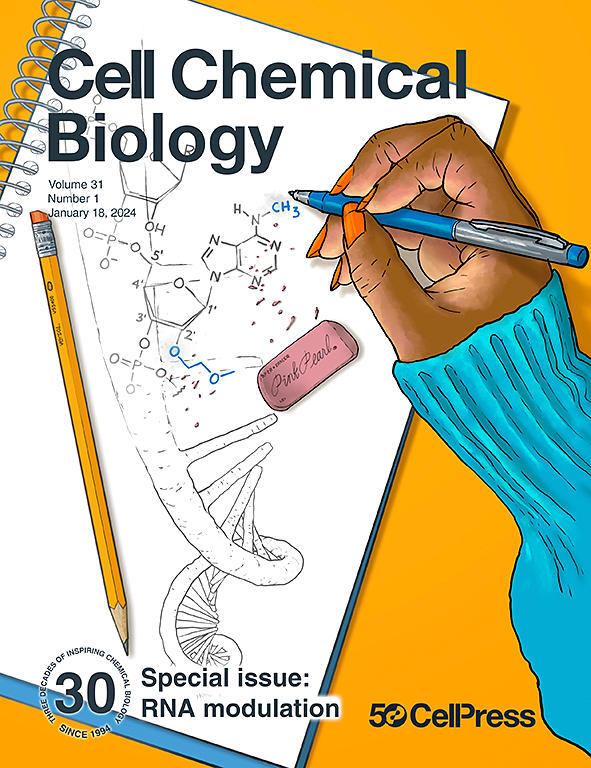Inter- and intra-tumoral ALDH1 heterogeneity in breast cancer identifies therapeutic opportunities for ALDH1A-specific inhibitors
IF 7.2
1区 生物学
Q1 BIOCHEMISTRY & MOLECULAR BIOLOGY
引用次数: 0
Abstract
Basal-like breast cancer is an aggressive subtype with limited therapeutic options. Here, transcriptomic analysis of public datasets suggested distinct subtype- and cell-specific expression patterns of ALDH1A isoforms in breast tumors, with ALDH1A3 predominantly expressed in the epithelial cells of basal-like tumors, whereas ALDH1A2 and ALDH1A1 were enriched in stromal and immune-associated subpopulations. High expression of ALDH1A3 and ALDH1A2, but not ALDH1A1, is associated with poor prognosis in high-grade, lymph-node-positive tumors. To evaluate therapeutic targeting, we developed ABD0171, an irreversible, selective ALDH1A3 inhibitor with additional ALDH1A1 activity. ABD0171 disrupted key oncogenic pathways, including IL6/JAK/STAT3, tPA, and Src/FAK, resulting in robust antitumor and antimetastatic effects in vitro and in vivo, with a favorable safety profile. These findings establish ALDH1A3 as a therapeutic target in breast cancers with epithelial-basal traits and validate ABD0171 as a promising clinical candidate to address current treatment challenges.

乳腺癌中ALDH1肿瘤间和肿瘤内的异质性确定了aldh1a特异性抑制剂的治疗机会
基底样乳腺癌是一种侵袭性亚型,治疗选择有限。在这里,对公共数据集的转录组学分析表明,ALDH1A亚型在乳腺肿瘤中具有不同的亚型和细胞特异性表达模式,ALDH1A3主要表达于基底样肿瘤的上皮细胞中,而ALDH1A2和ALDH1A1则富集于基质和免疫相关亚群中。在高级别淋巴结阳性肿瘤中,ALDH1A3和ALDH1A2的高表达与预后不良相关,而ALDH1A1不表达。为了评估治疗靶向性,我们开发了ABD0171,一种不可逆的选择性ALDH1A3抑制剂,具有额外的ALDH1A1活性。ABD0171破坏了关键的致癌途径,包括IL6/JAK/STAT3, tPA和Src/FAK,在体外和体内产生强大的抗肿瘤和抗转移作用,具有良好的安全性。这些发现确立了ALDH1A3作为具有上皮基础特征的乳腺癌的治疗靶点,并验证了ABD0171作为解决当前治疗挑战的有前途的临床候选药物。
本文章由计算机程序翻译,如有差异,请以英文原文为准。
求助全文
约1分钟内获得全文
求助全文
来源期刊

Cell Chemical Biology
Biochemistry, Genetics and Molecular Biology-Molecular Medicine
CiteScore
14.70
自引率
2.30%
发文量
143
期刊介绍:
Cell Chemical Biology, a Cell Press journal established in 1994 as Chemistry & Biology, focuses on publishing crucial advances in chemical biology research with broad appeal to our diverse community, spanning basic scientists to clinicians. Pioneering investigations at the chemistry-biology interface, the journal fosters collaboration between these disciplines. We encourage submissions providing significant conceptual advancements of broad interest across chemical, biological, clinical, and related fields. Particularly sought are articles utilizing chemical tools to perturb, visualize, and measure biological systems, offering unique insights into molecular mechanisms, disease biology, and therapeutics.
 求助内容:
求助内容: 应助结果提醒方式:
应助结果提醒方式:


